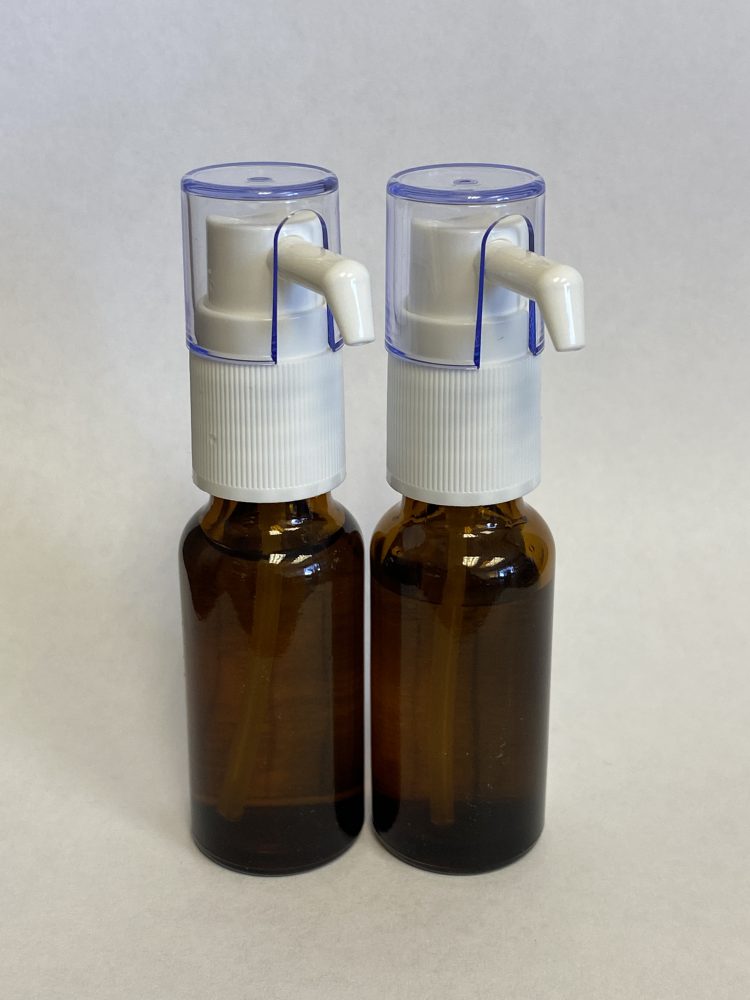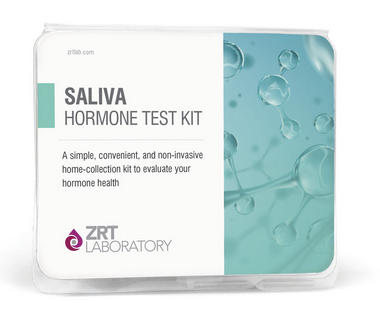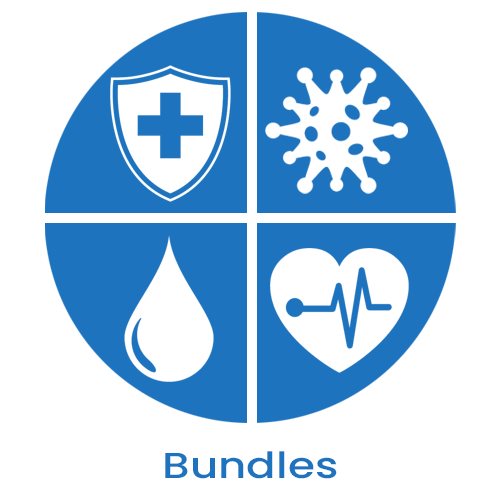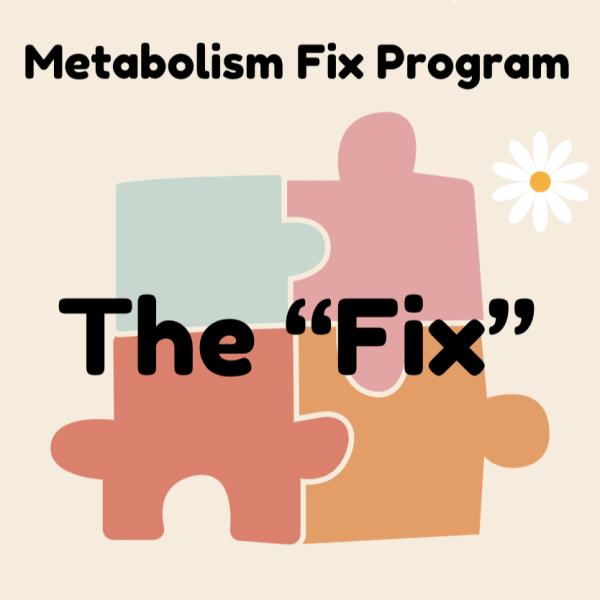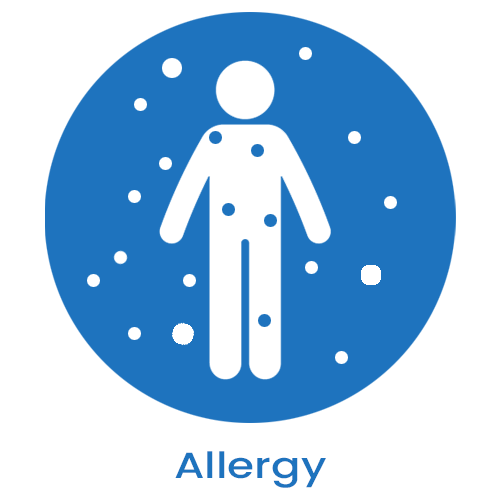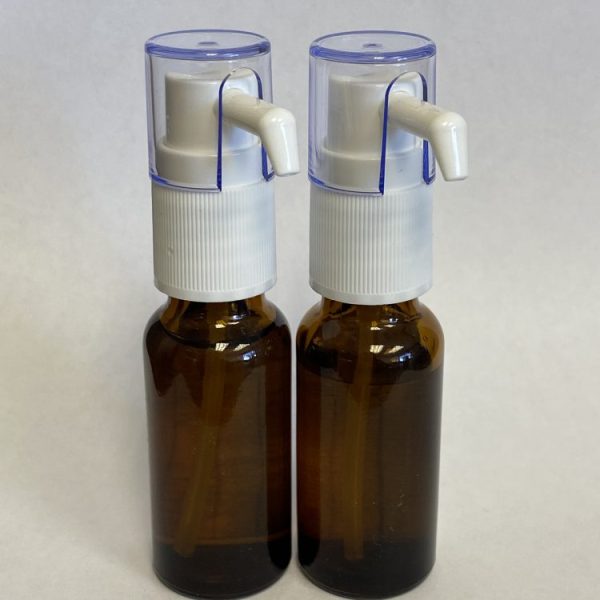How to take drops
Day 1: When first starting the drops place TWO pumps under your tongue and hold it there without swallowing for 2 minutes. Take the two pumps on day one and monitor for any adverse events such as itching, tingling, tongue irritation, runny nose, headache, gastrointestinal distress or cramping, or any symptoms that seem suspicious. (See list below)
Day 2: On day two of therapy, if there was not an adverse reaction on day 1 then take two pumps in the morning, and two pumps in the evening. Each time you take the drops you should hold it under your tongue for 2 minutes before swallowing.
Day 3: If there are no adverse symptoms then on the third day take three pumps in the morning, and three pumps in the evening. If no problems arise then continue to take 3 pumps, TWICE per day.
Drops should be taken away from food. If you need to take the drops near a meal, then try to take it a minimum of 20 minutes before or after the meal. In general, we recommend taking your drops first thing in the morning as you rise from bed. Second dose is in the evening at bedtime. We recommend keeping the bottle near your bed or vanity and avoid carrying them around with you. This avoids loss, breakage or other mishaps.
Day AM PM
1- 2 pumps –
2- 2 pumps 2 pumps
3- 3 pumps 3 pumps
4+ 3 pumps 3 pumps
Expectation
Sublingual therapy is anticipated to last 3-4 years, but your individual case may vary. I typically see some clinical benefit within the first 3 to 6 weeks of therapy. This success rate is higher in those that omit the allergens (foods) according to the prescribed recommendation. Clinical experience has shown that when patients are more consistent with their sublingual therapy, avoiding missed days of therapy, that immunotherapy occurs more successfully, and they are able to complete their therapy sooner. So, the most cost effective as well as most effective clinical result comes from consistent compliance with the prescribed treatment program.
There are three phases to the therapy, each with their own expectation and reward.
Phase 1 (0 to 3 months) – during this initiation phase the immune system begins to change and develop tolerance. A change in present symptoms may be felt but this early phase may be devoid of noticeable physical improvement or symptom resolution. Don’t lose faith, the process is still in play.
Phase 2 (3 months to 2 years) – symptoms should really begin to subside as tolerance by the immune system increases. If you typically require medication to treat allergic symptoms, then you might expect to see the need for such medication subside. The occurrence of gastrointestinal issues, running nose, congestion and other allergic symptomatology should become less frequent and easier to control.
Phase 3 (2 to 5 years) – long-term tolerance develops in this time frame and with it comes the potential for complete resolution of allergies and life without the need for medication or relapses.
Seeing your way through each of these important steps with consistency ensures the greatest result.
Retesting
In general it is anticipated that retesting will occur on a yearly basis. The purpose of this test is to revaluate your progress as allergens are re-measured to view your expectant reduction in allergic response. This is then used to recalibrate your prescription to the appropriate dose. Understand that unexpected turns in your individual treatment course may require testing more often.
Food elimination protocol
Everyone’s response to foods may vary greatly. The severity of symptoms brought on a given food do not always correlate with the degree of sensitivity seen in testing. The best results are obtained when the offending foods are eliminated for a period of at least 4 to 6 weeks and then gradually reintroduced in a specific dose and timetable. Chelsea will guide you in exactly HOW and WHEN to reintroduce specific foods. When reintroducing foods always keep the amount small and allow 4 days between exposures. DO NOT simply return to eating as much of a given food as you want and certainly DO NOT eat it every day. Reintroduction is a gradual process that tests your body’s ability to tolerate that specific food allergen.
In general terms, a food with low reactivity IgG (+1) can be eaten every 2 to 3 days while taking the drops but it’s amount should be kept small, and it should not exceed one exposure every other day. Highly reactive foods such as IgG (+2) or (+3) foods and any IgE (+) foods should be eliminated 100% for the first 4 weeks of the therapy and then gradually reintroduced one at a time on a schedule that Chelsea provides for you. Once successfully reintroduced a previously high reactive food should not be consumed more than twice per week.
Wheat is never a healthy food to reintroduce. This is not to say that will never again put wheat to your lips but the idea of intentionally reintroducing it is not a good recommendation. Dairy should be one of the last foods you reintroduce. It too is not a healthy food but some intake of fermented dairy products such as cheese or yogurt can typically be consumed safely.
In general, we will gradually experiment with larger and more frequent exposures with a goal toward reducing restrictions. Chelsea, your dietitian, will help guide this process over time and you need to schedule time with her in the first 4 weeks of this process to fully understand the proper protocol.
There will always be some general principles that we feel are beneficial to all people regarding diet.
• Rotate your foods to avoid eating the exact same thing every day. This is especially important to
remember regarding foods with a high allergenic potential such as dairy, wheat, nuts, soy, yeast,
eggs and shellfish.
• The protein in cow’s dairy is casein and whey, and in wheat the protein is gluten. These two foods
represent the most common food allergens worldwide but are particularly problematic in the U.S. It is our advice that these foods be kept to a very low minimum or
entirely avoided in everyone’s diet regardless of food allergen history. They are just not healthy foods for the human body.
Follow Up
A follow up appointment to track progress will need to occur every 3 months for the first year. The appointment is necessary to assess progress as this is used in the determination of any prescription dosage changes. The sublingual drop concentration will increase over time leading to greater immune system tolerance of your allergens. Total length of treatment is expected to be between 2 to 4 years depending on response and severity of allergies
Summary
1. Foods with IgG (+1) reaction – should NOT be consumed daily.
a. Limit to one serving 2 to 3 times per week.
2. Foods with IgG (+2) or (+3) reaction and all IgE (+) foods should be avoided 100% for the first 4 weeks of allergy drop therapy and then slowly reintroduced as per Chelsea’s guidance.
3. Work with Chelsea to determine the order and amount of the foods that you will introduce first, second and so on.
4. Always allow 4 days between exposures when reintroducing new foods.
a. Start with ridiculously small amount and gradually increase to tolerance.
5. Wheat and Dairy foods are problematic and should be kept out the longest and slowly attempted after all other foods have been successfully reintroduced.

